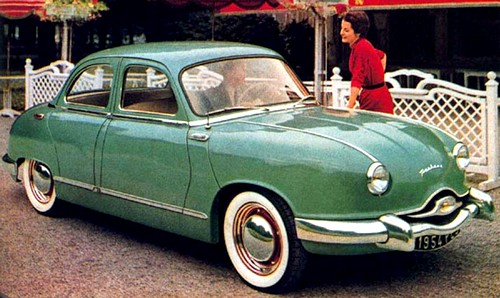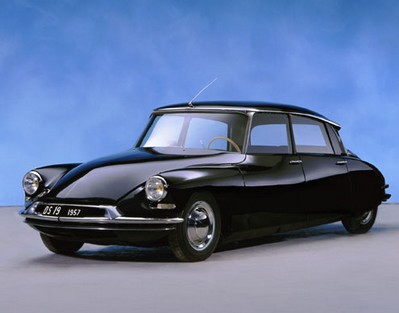Originally posted by Stude Shoo-wop!
View Post
Announcement
Collapse
No announcement yet.
Studes in Roadside Americana photos
Collapse
X
-
You young whippersnapper. You aint old enough to have read an article a long time ago. This said in jest of course.Jerry Forrester
Forrester's Chrome
Douglasville, Georgia
See all of Buttercup's pictures at https://imgur.com/a/tBjGzTk

-
By the body side moulding placement, it's a 23rd series, making it a 1949 or 1950. Tom McCahill after road testing one, called it a goat.Originally posted by Stude Shoo-wop! View PostAn infamous '48-'50 "pregnant elephant" no less!
Alvin Cluster, Earle C. Anthony's L/A sales manager (and JFK's PT Boat squadron commander during WWII) told me that "people starved attempting to sell these cars."
Comment
-
Gary Ash
Dartmouth, Mass.
'32 Indy car replica (in progress)
’41 Commander Land Cruiser
'48 M5
'65 Wagonaire Commander
'63 Wagonaire Standard
web site at http://www.studegarage.com
Comment
-
I note that it is two lanes up the grade and one lane down.Originally posted by garyash View PostHere's the same intersection on Main St. in Jamestown, NY as in post #10094. A few buildings missing, no Studebakers or Packards, pretty lifeless, unfortunately.
[ATTACH=CONFIG]72865[/ATTACH]Gary L.
Wappinger, NY
SDC member since 1968
Studebaker enthusiast much longer
Comment
-
I recall a picture showing Nash's engineers testing their bodywork aerodynamically. I don't know if Packard did it but most car manufacturers did not care about this at a time when new cars were selling like hotcakes, except for these infamous Packards.Originally posted by Stude Shoo-wop! View PostAn infamous '48-'50 "pregnant elephant" no less! I remember reading in an article a long time ago how the same generation "bathtub" Nashes had a dramatically reduced drag coefficient despite their similar styling. Is there any truth to that?sigpic
Comment
-
In my line of work, as a supplier to a broad base of manufacturers (including automotive mfg.), I attended many seminars, and listened to many presentations. I don't recall exactly who the speaker was (since I'm over 70, I have a built-in excuse for not remembering), but I vaguely recall one engineer who was a designer in the early nineteen fifties discussing the so-called "bathtub" design craze of the era. He said that the motivation for the concept was driven by the "art" community, Hollywood, and marketing. His statement was that he and fellow designers knew that the concept would always look better in drawings than when built in three dimension full size sheet metal. Instead, they looked like cartoons on wheels.Originally posted by christophe View PostI recall a picture showing Nash's engineers testing their bodywork aerodynamically. I don't know if Packard did it but most car manufacturers did not care about this at a time when new cars were selling like hotcakes, except for these infamous Packards.
I'm not sure if his opinion was truly representative of the attitude of design artists of his day, but if true, it could explain how they missed the mark in public acceptance. I would think that lacking enthusiasm and full effort to do their best, would show up in the end result. Thinking of how elegant the big heavy Packards were in the 1930's, leading the way with their huge distinct verticle grille...the postwar Packards (Hudson, Nash, maybe others) gave an appearance of a cheap cartoon with those de-emphasized but bulbous chrome slathered front ends and slab-sided cockroach shapes.John Clary
Greer, SC
SDC member since 1975
Comment
-
Comment
-
The bathtub Packards might belong to the category of cars I call, “interference cars”. I include in this category cars that have started their lives with a nice shape on the paper. Then, along the way, the tooling men came in and said: “we can’t do this like that; this would be too expensive or too complicated”. Of course, the bean counters would say amen to this. Then, the sales department would put its grain of salt by saying: “Hey, we need more chrome to make jealous our competitors” like Studebaker did in 1955. Basically, Packard made to the Clipper what Lincoln did to the Continental. Another perfect example of this is the unfortunate Hudson Jet that did not deserve the tough life she had. I love her anyhow and wish I have one. I love the step-down design or Nash’s designs too.Originally posted by jclary View PostIn my line of work, as a supplier to a broad base of manufacturers (including automotive mfg.), I attended many seminars, and listened to many presentations. I don't recall exactly who the speaker was (since I'm over 70, I have a built-in excuse for not remembering), but I vaguely recall one engineer who was a designer in the early nineteen fifties discussing the so-called "bathtub" design craze of the era. He said that the motivation for the concept was driven by the "art" community, Hollywood, and marketing. His statement was that he and fellow designers knew that the concept would always look better in drawings than when built in three dimension full size sheet metal. Instead, they looked like cartoons on wheels.
I'm not sure if his opinion was truly representative of the attitude of design artists of his day, but if true, it could explain how they missed the mark in public acceptance. I would think that lacking enthusiasm and full effort to do their best, would show up in the end result. Thinking of how elegant the big heavy Packards were in the 1930's, leading the way with their huge distinct verticle grille...the postwar Packards (Hudson, Nash, maybe others) gave an appearance of a cheap cartoon with those de-emphasized but bulbous chrome slathered front ends and slab-sided cockroach shapes.
The cleanliness of the lines of the Loewy/Bob Bourke coupe shows clearly that there were no such interferences during its conception. I don’t have in mind other US examples for this, except the Tucker, but two French examples come to my mind: the Panhard Dyna Z (influenced by the Nash) and the Citroën DS 19 reportedly influenced by the Studebaker Coupe for the design of the front end. Both of these cars were conceived almost single handedly, hence their coherent appearance.

 sigpic
sigpic
Comment
-
It's very interesting to see a Gallic perspective on a seemingly American dominated issue! I do agree with you that both of these cars are quite lovely. It proves that beautiful, streamlined design is possible if the finance men will allow it!Originally posted by christophe View PostTwo French examples come to my mind: the Panhard Dyna Z (influenced by the Nash) and the Citroën DS 19 reportedly influenced by the Studebaker Coupe for the design of the front end. Both of these cars were conceived almost single handedly, hence their coherent appearance.

 Jake Robinson Kaywell: Shoo-wops and doo-wops galore to the background of some fine Studes. I'm eager and ready to go!
Jake Robinson Kaywell: Shoo-wops and doo-wops galore to the background of some fine Studes. I'm eager and ready to go!
1962 GT Hawk - "Daisy-Mae" - she came dressed to kill in etherial green with a charming turquoise inside. I'm hopelessly in love!
Comment
-
It is often not a finance related decision, but rather a sales driven decision. Each year a car could be a bit more modern and sell, but a radical departure usually had a negative effect on sales.Originally posted by Stude Shoo-wop! View PostIt's very interesting to see a Gallic perspective on a seemingly American dominated issue! I do agree with you that both of these cars are quite lovely. It proves that beautiful, streamlined design is possible if the finance men will allow it!
Before you use the new 1953 models as an example, note that more 1952 model Studebakers were sold than 1953s.
EDIT: And Avantis really didn't sell. They were good for creating interest and showroom traffic (as well as setting speed records that helped on that front).Gary L.
Wappinger, NY
SDC member since 1968
Studebaker enthusiast much longer
Comment
-
Of course we will NEVER know the true figures of each, had the 1953 C/K line been available right from the start of 1953 production and enough Avantis were actually available immediately upon their April, 1962 introduction date.Originally posted by studegary View PostIt is often not a finance related decision, but rather a sales driven decision. Each year a car could be a bit more modern and sell, but a radical departure usually had a negative effect on sales.
Before you use the new 1953 models as an example, note that more 1952 model Studebakers were sold than 1953s.
EDIT: And Avantis really didn't sell. They were good for creating interest and showroom traffic (as well as setting speed records that helped on that front).
Didn't you related a story here of a lost Avanti sale because there were none available, and the buyer didn't want to wait any longer?
Craig
Comment
-
I was just trying for a couple of examples. Yes, a friend did give up waiting for an Avanti and purchased a new 1963 Corvette. I also know of others that shopped Avantis and bought something else, including my sister that bought a new 1963 Thunderbird.Originally posted by 8E45E View PostOf course we will NEVER know the true figures of each, had the 1953 C/K line been available right from the start of 1953 production and enough Avantis were actually available immediately upon their April, 1962 introduction date.
Didn't you related a story here of a lost Avanti sale because there were none available, and the buyer didn't want to wait any longer?
Craig
It may have been Loewy that was quoted as saying something to the effect that the buying public resisted too much change at once.
EDIT: After Avantis became available, they still did not sell.Gary L.
Wappinger, NY
SDC member since 1968
Studebaker enthusiast much longer
Comment
-
Studebaker contracted with Astabula Fiberglass to provide Avanti bodies. However, this was the same source that Chevrolet got their Corvette bodies from.
Guess who got plenty of bodies and who didn't?
The other problem was that when Studebaker first showed the Avanti to the public, they had very few available to fill the 1,000's of orders they received.
People are fickle, if they cannot get what they want...right now, they buy something else.
And the bathtub Packards were the responsibility of Edward Macauley, Packards 'so-called' director of styling (and Packard president Alvin Macauleys son) who had no experience in this field.
He had Packard slather on clay to a 1947 Clipper until he got the look of what he wanted. When the '48's were first shown to dealers, there was a gasp then silence and finally applause.
Comment

Comment